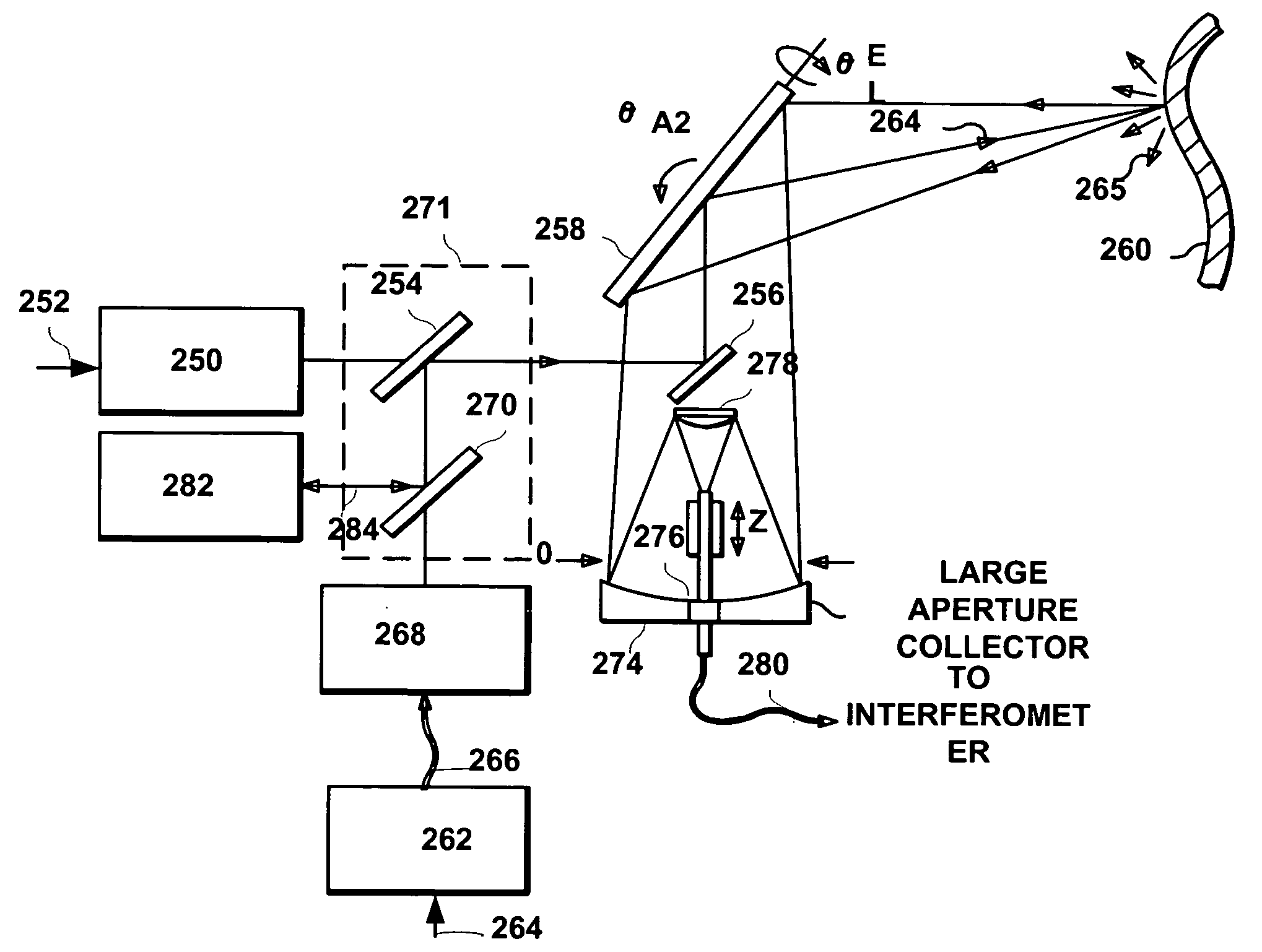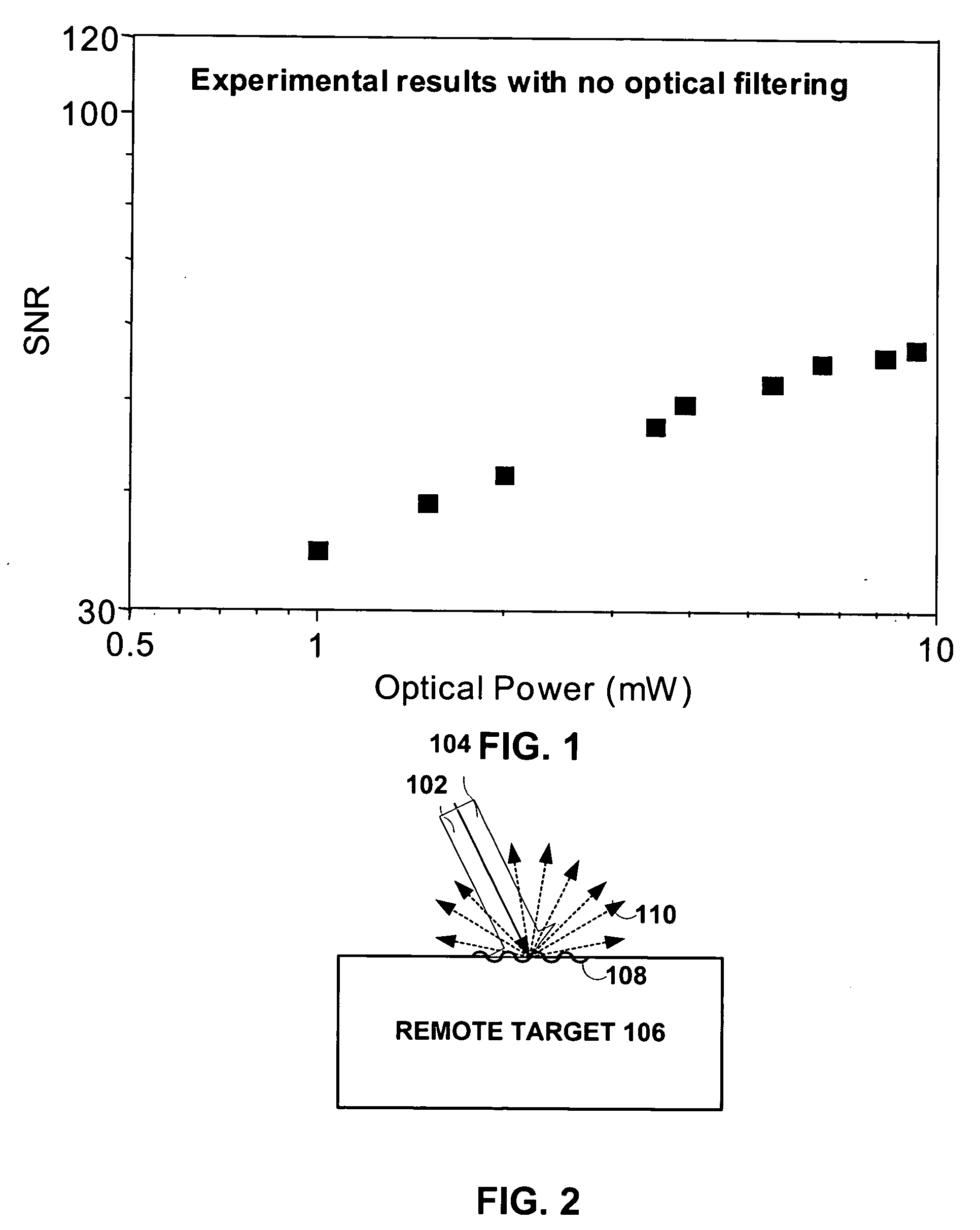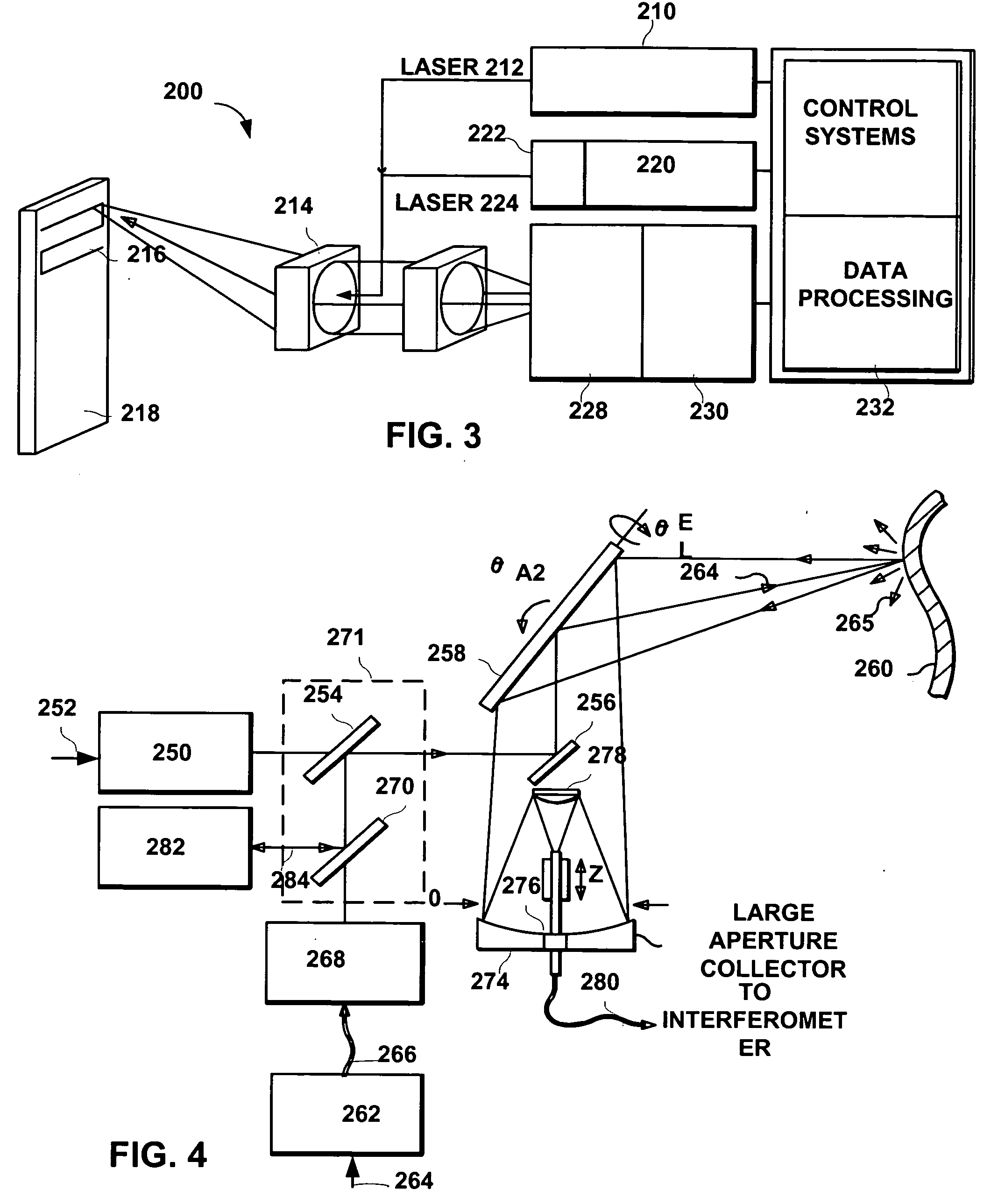System and method to reduce laser noise for improved interferometric laser ultrasound detection
a laser ultrasound and laser noise reduction technology, applied in the field of ultrasound generation and detection, can solve the problems of adversely increasing the manufacturing cost of composite structures, requiring strict quality control procedures in the manufacturing process, and labor-intensive nde methods, and achieve high snr laser ultrasound measurements
- Summary
- Abstract
- Description
- Claims
- Application Information
AI Technical Summary
Benefits of technology
Problems solved by technology
Method used
Image
Examples
Embodiment Construction
[0023] Embodiments of the present invention are illustrated in FIG. 5, like numerals being used for like and corresponding parts of the various drawings.
[0024]FIG. 2 illustrates two incoming laser beams, which include a laser beam 102 to generate ultrasound and a detection laser beam 104 to detect the ultrasound at a remote target 106, such as a composite material under test. These lasers may be coaxially applied to remote target 106. Generation laser beam 102 causes thermoelastic expansion in target 106 in the form of ultrasonic deformations 108. Deformations 108 modulate, scatter and reflect detection laser beam 104 to produce phase-modulated light 110 directed away from target 106.
[0025]FIG. 3 provides a block diagram with the basic components for performing ultrasonic laser testing. Generation laser 210 produces a laser beam 212 which optical assembly 214 directs to composite material 216 under test. As shown, optical assembly 214 includes a scanner or other like mechanism tha...
PUM
 Login to View More
Login to View More Abstract
Description
Claims
Application Information
 Login to View More
Login to View More - R&D
- Intellectual Property
- Life Sciences
- Materials
- Tech Scout
- Unparalleled Data Quality
- Higher Quality Content
- 60% Fewer Hallucinations
Browse by: Latest US Patents, China's latest patents, Technical Efficacy Thesaurus, Application Domain, Technology Topic, Popular Technical Reports.
© 2025 PatSnap. All rights reserved.Legal|Privacy policy|Modern Slavery Act Transparency Statement|Sitemap|About US| Contact US: help@patsnap.com



